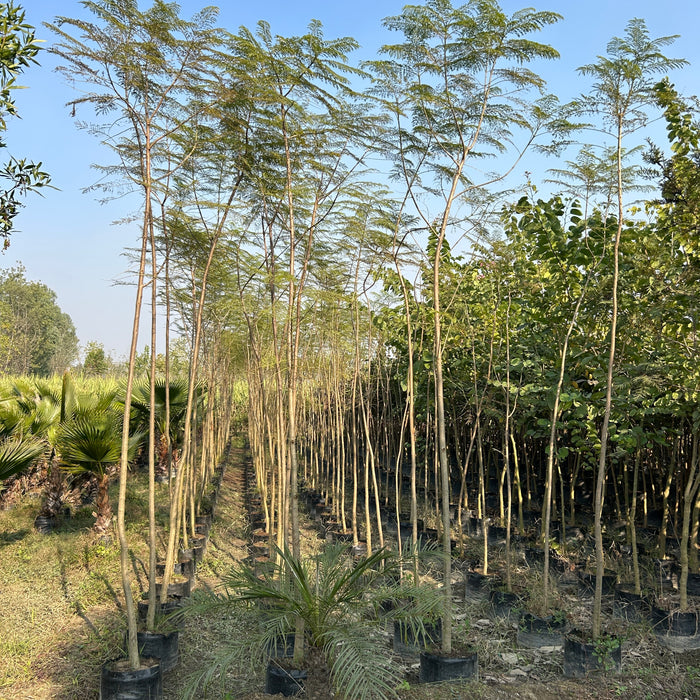
Buy Jacaranda Tree - A Tree of Purple Splendor | Saharanpur Nursery
Introduction
Jacaranda (Jacaranda mimosifolia), often referred to as the "Blue Jacaranda," is a breathtaking ornamental tree famous for its delicate, lavender-blue flowers. Native to South America, particularly Brazil and Argentina, the Jacaranda tree is a favorite for its vibrant blooms and fern-like foliage. It adds a magical touch to gardens, parks, and streetscapes.
Physical Description
· Height and Growth: Jacaranda trees grow to a height of 10–15 meters with a spreading canopy, making them excellent shade providers.
· Leaves: The tree has fern-like, bipinnate leaves that create a soft, lush appearance.
· Flowers: The bell-shaped, lavender-blue flowers grow in clusters and bloom in spring or early summer, often forming a stunning carpet of petals beneath the tree.
· Bark: The bark is greyish-brown, smooth when young, and becomes slightly rough with age.
· Fruit: It produces woody, flat, brown seed pods after flowering.
Growing Conditions
· Soil: Thrives in well-drained, sandy, or loamy soils but can adapt to various soil types.
· Sunlight: Prefers full sun for maximum flowering but can tolerate partial shade.
· Watering: Requires regular watering when young. Once established, it becomes moderately drought-tolerant.
· Climate: Grows best in tropical and subtropical climates but can tolerate mild frosts.
Care and Maintenance
· Pruning: Prune young trees to shape their canopy and remove dead or crossing branches. Minimal pruning is needed for mature trees.
· Fertilizer: Use a balanced fertilizer during the growing season to enhance foliage and flowering.
· Pest Control: The tree is generally resistant to pests but occasionally requires monitoring for aphids or scale insects.
Uses
1. Ornamental: Its spectacular flowers make Jacaranda a popular choice for avenues, gardens, and parks.
2. Shade: The tree’s wide canopy provides ample shade, making it ideal for urban areas.
3. Attracts Wildlife: The flowers attract bees, butterflies, and birds, enriching biodiversity.
4. Wood: Jacaranda wood is sometimes used for making furniture and decorative items.
Landscaping Applications
Jacaranda trees are widely planted along streets, in public parks, and as focal points in gardens. Their vibrant flowers create a dramatic display, making them a favorite among landscapers.
Ecological Benefits
Jacaranda trees contribute to the environment by providing shade, reducing urban heat, and supporting pollinators. However, in some regions, they are considered invasive due to their fast growth and prolific seeding.
Conclusion
The Jacaranda tree, with its enchanting purple blooms and graceful canopy, is a true showstopper in any landscape. Whether planted in a private garden or a public park, it transforms the area with its beauty and charm. Easy to grow and maintain, Jacaranda is a beloved choice for enhancing outdoor spaces.
